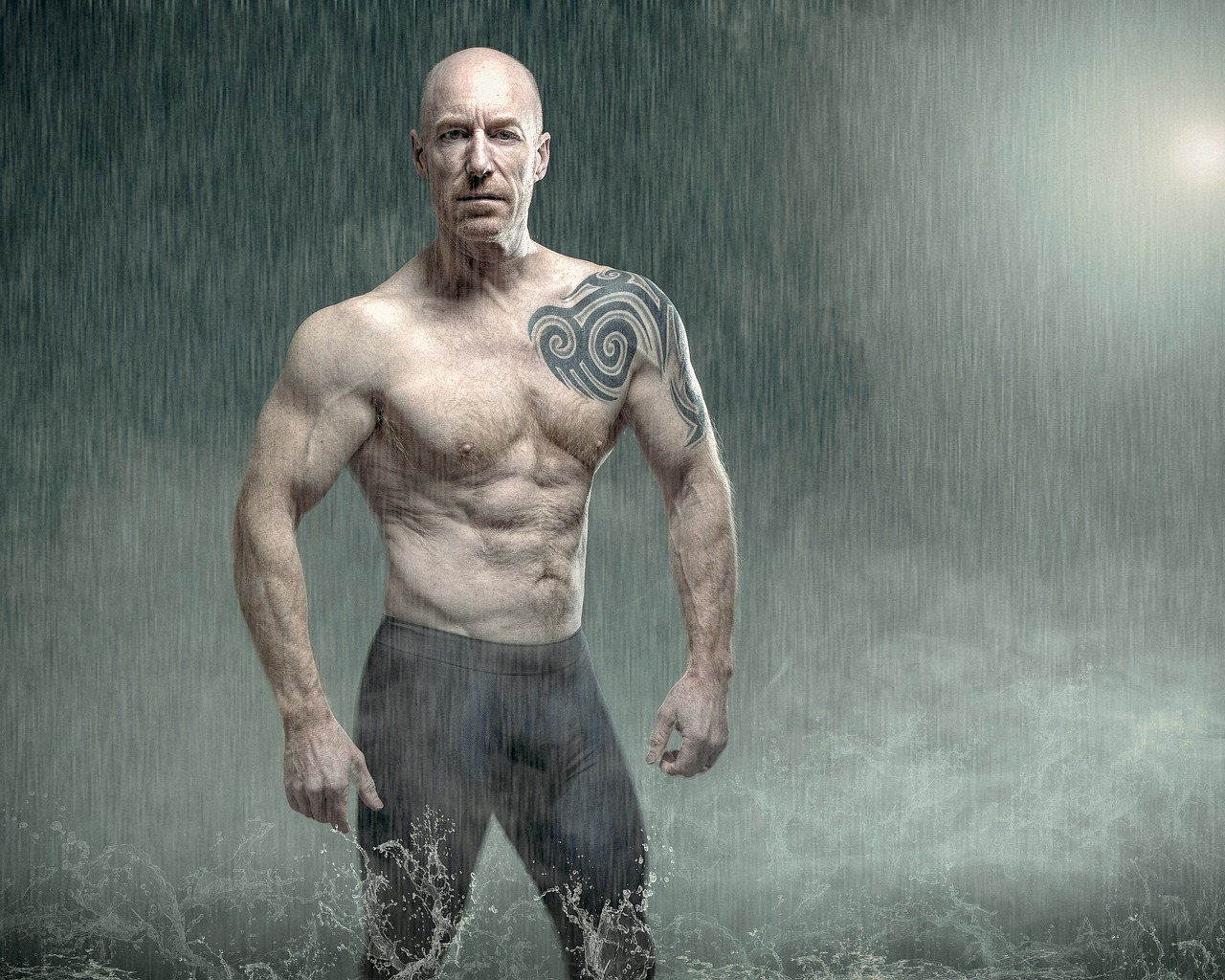Table of Contents
Intro
Nipples, otherwise known as mammary glands, are an essential part of the human anatomy. While both males and females possess this body part, it appears to be more of a mystery why men have nipples. This article aims to tackle this question head-on by exploring the evolutionary and biological reasons as to why men have nipples. Furthermore, the medical implications of male nipples will be discussed and possible solutions for any issues related to them presented.

What are Nipples?
When it comes to the human body, there are many mysteries that can go unexplained. One of the most perplexing is why men have nipples when they cannot lactate and do not have any real purpose. It is believed that male and female fetuses look identical in early stages of development, which means nipples are a feature both sexes share. This article aims to answer the question of why men have nipples by exploring the potential scientific explanations and evolutionary implications behind their existence.
Evolutionary Theory
Evolutionary theory offers an explanation for why men have nipples, despite not needing them to breastfeed offspring. The theory suggests that males and females share common ancestral traits because they evolved from a single species. Therefore, male nipples are an evolutionary byproduct of the developmental process that forms nipples in all mammals.
The development of nipples occurs during fetal development before the sex of the fetus is determined. Both males and females have similar genetic blueprints, which include the formation of nipples. As a result, even though males do not lactate or breastfeed offspring, they still possess fully formed nipples.
Interestingly, this also explains why some men can experience nipple sensitivity and even produce milk under certain circumstances such as hormonal imbalances or medication side effects. The presence of male nipples has no harmful effect on their survival or reproduction; therefore, it was never selected against through natural selection over time in human evolution.

Early Developmental Stages
The early developmental stages in human life are fascinating. These stages begin at fertilization and continue until birth. During this time, the fetus develops from a single cell to a fully formed baby. One of the most interesting phenomena that occur during these early stages is the development of nipples in both males and females.
The reason why men have nipples has been a topic of debate for many years. The simple answer is that all fetuses start out with nipples before sexual differentiation takes place. At around six weeks gestation, male and female fetuses look similar, and their bodies have not yet developed any distinct gender characteristics.
While men don't need nipples for breastfeeding purposes, they still develop them due to genetic programming that happens before sex determination occurs in fetal development. Essentially, male nipples are just a side effect of our biological blueprint – an evolutionary leftover from our shared ancestry with females when we were all developing as embryos in the womb.

Male Nipple Function
The question of why men have nipples is a common one, as it is often assumed that they serve no purpose in males. However, male nipples actually do have a function. During fetal development, all embryos start out with the same basic body plan and features, including nipples. It isn't until later in development that hormones determine which sex organs will form.
While male nipples may not be essential for survival or reproduction, they do have some use. Nipples contain sensitive nerve endings that can provide pleasure when stimulated, both for men and their partners. Additionally, the presence of nipples on men can play a cultural and social role in terms of body image and self-expression.
Overall, although male nipples may not seem to serve an obvious biological function like those of female breasts used for nursing offspring or sexual attraction purposes; they still play a role in human anatomy and physiology beyond simply being vestigial remnants from embryonic development.

Cultural Effects
Cultural effects on the way we perceive and understand our bodies are often overlooked when it comes to scientific discussions. For instance, the question of why men have nipples is more than just a biological curiosity. Our cultural background shapes how we frame and approach such questions. In many societies, discussing body parts that are deemed inappropriate or taboo can be considered impolite or even indecent.
Moreover, cultural attitudes towards gender roles can further influence how we think about certain bodily features. Nipples are often associated with femininity and motherhood in many cultures, which might explain why some men feel self-conscious about having them. Conversely, other cultures have different views about male nipples; for example, in some African tribes, male nipple piercing has been a common practice for centuries as a sign of status and masculinity.
In conclusion, understanding the cultural effects on our perception of human anatomy can provide valuable insights into how we view our bodies and ourselves. By acknowledging these influences, we can develop a more nuanced understanding of why certain bodily features exist and their significance in different contexts beyond just their biological functions.

Medical Implications
One of the most common questions asked by many people is, why do men have nipples? The answer to this question lies in embryonic development. During embryonic development, all human embryos follow a similar pathway, which includes the formation of mammary ridges. These are lines of tissue that run from the armpit to the groin on either side and contain specialized cells known as milk ducts.
In females, these mammary ridges develop into breasts and nipples during puberty due to hormonal influences. However, in males, these mammary ridges typically regress and do not develop fully. Nonetheless, because the genetic blueprint for nipple formation is hardwired into every embryo regardless of sex, males also possess nipples.
While male nipples may seem like an unnecessary physical feature with no apparent function, they can serve as potential indicators for health issues such as breast cancer. Therefore it is essential for both men and women to regularly check their breasts or chest area for any abnormalities or changes that might require medical attention.

When development goes wrong
When development goes wrong, it can lead to a range of physical anomalies in the human body. For instance, many people have wondered why men have nipples since they don't bear children or breastfeed. The reason is that all embryos start off as female before the male sex hormones kick in and trigger the development of male reproductive organs. During this early stage of fetal development, nipples form before the embryo's sex is determined.
However, there are cases where nipple development can go wrong and lead to abnormalities such as extra nipples or inverted nipples. Extra nipples (also known as supernumerary nipples) occur in about 1-5% of humans and are usually harmless, but they can be removed for cosmetic reasons if desired. Inverted nipples occur when the milk ducts under the nipple contract and pull inward instead of outward; this can cause difficulties with breastfeeding but can be corrected with surgery.
In conclusion, while some aspects of our developmental biology may seem strange or confusing at first glance (like why men have nipples), understanding how these processes work is crucial for treating developmental abnormalities and ensuring optimal health outcomes for all individuals.

Some men can lactate and produce milk
One of the interesting facts about male nipples is that they can sometimes produce milk. This phenomenon is called galactorrhea, which happens when the hormone prolactin stimulates milk production in the mammary glands. Although it's more common for women to experience this during pregnancy or while breastfeeding, men can also have high levels of prolactin that lead to lactation.
While not all men will experience milk production, those who do may notice a discharge from their nipples that looks similar to breastmilk. It's important to note that this condition isn't harmful on its own and can often be treated by addressing any underlying medical conditions causing elevated prolactin levels.
Despite having no functional purpose for males, nipples remain an evolutionary remnant from our distant ancestors. Both males and females develop nipples in utero before sex differentiation occurs, making them a shared trait among all humans regardless of gender identity. However, as we continue to learn more about human biology and evolution, there may be even more fascinating discoveries regarding why certain traits persist in our species over time.

Men Can Get Breast Cancer
Men can get breast cancer too. Though rare, it is possible for the male breast tissue to become malignant. Men have a small amount of breast tissue similar to that of women, and the same gene mutations and chromosome abnormalities that lead to breast cancer can affect both genders. However, breast cancer is still more common in women due to the larger amount of breast tissue and greater exposure to estrogen.
Male breast cancer is often linked to higher levels of testosterone or stimulation of the breast tissue. Despite the rarity of the condition, it is important for men to be aware of the possibility and to seek medical attention if they notice any changes in their breast tissue. While the topic of male breast cancer may not be widely discussed, it is recognized in popular science and medical communities as a legitimate health concern.
This condition is also why men have nipples, as both sexes develop breast tissue in the womb.

Conclusion
In conclusion, while men may not need nipples for lactation purposes, they still serve an important purpose in embryonic development. The presence of nipples on males can be attributed to the fact that all human embryos start off with the potential to develop into either male or female sex organs. During early fetal development, nipples form before it's determined whether the fetus will develop into a male or female.
Additionally, nipples have been found to have a secondary function in sexual pleasure and arousal for both men and women. Nipples are highly sensitive areas of the body that can produce pleasurable sensations when stimulated. This is due to the presence of nerve endings in and around the nipple area.
Overall, while some may find it strange or unnecessary for men to have nipples, their presence serves an important purpose in both embryonic development and sexual pleasure.

Related Articles
Very Well Health Why do Men Have Nipples?
https://www.verywellhealth.com/why-do-men-have-nipples-2328794
Health Line Why do Men Have Nipples?
https://www.healthline.com/health/mens-health/why-do-men-have-nipples
PMI BMI Why do Men Have Nipples?
https://pmj.bmj.com/content/87/1023/79
Live Science Why do Men Have Nipples?
https://www.livescience.com/32467-why-do-men-have-nipples.html
Mens Health Why do Men Have Nipples?
https://www.menshealth.com/health/a37092885/why-do-men-have-nipples/
Scientific American Why do Men Have Nipples?
https://www.scientificamerican.com/article/why-do-men-have-nipples/
The Conversation Why do Men Have Nipples?
https://theconversation.com/why-do-men-have-nipples-120893
BBC Why do Men Have Nipples?
https://www.bbc.com/future/article/20131220-why-do-men-have-nipples
Newsroom Why do Men Have Nipples?
https://newsroom.unsw.edu.au/news/health/why-do-men-have-nipples
Discover Magazine Why do Men Have Nipples?
https://www.discovermagazine.com/health/why-do-men-have-nipples
Science Focus Why do Men Have Nipples?
https://www.sciencefocus.com/the-human-body/why-do-men-have-nipples/
Nature Why do Men Have Nipples?
https://www.nature.com/articles/news990805-1
Nerd Momma Why I sweat so much?
https://nerdmomma.com/why-do-i-sweat-so-much-9-powerful-facts/
Nerd Momma Why is my eye twitching?
https://nerdmomma.com/why-is-my-eye-twitching-stop-9-eyelid-twitch-facts/
